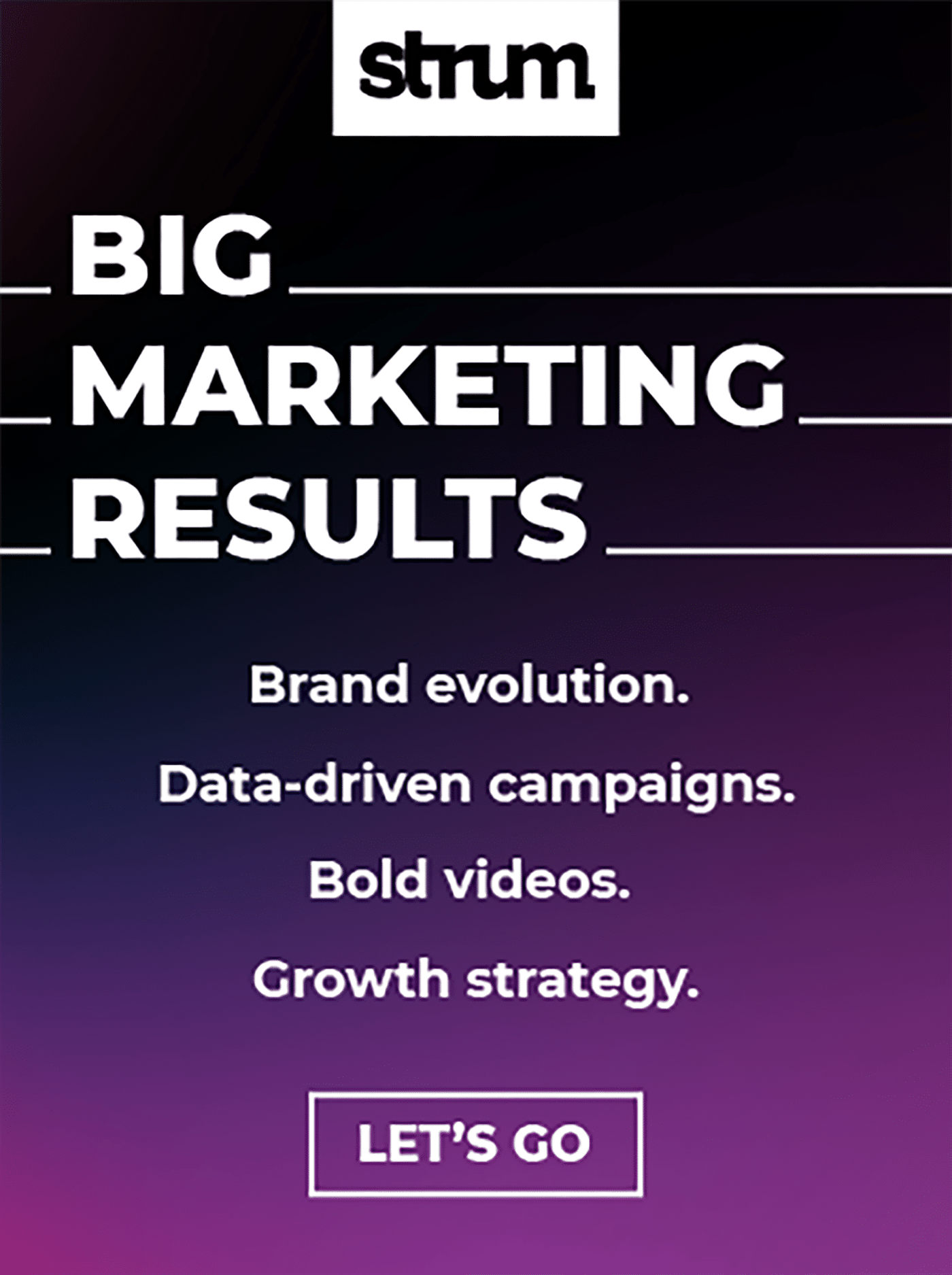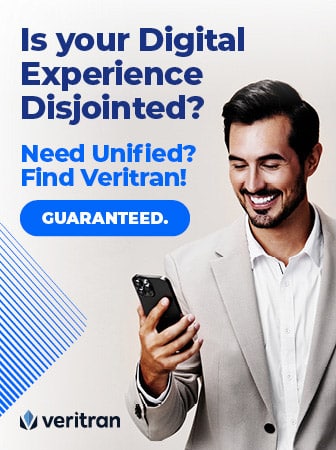Before searching online, clicking on social media ads, or approaching their network for a referral, small business owners turn to their memories first when looking for banking providers. As bank institutions work for that top-of-mind presence, some are ramping up content marketing for small businesses.
What’s new about that? The institutions publishing content for small- to medium-size businesses are getting smaller in asset size, and they’re creating highly efficient demand-generation funnels to generate deposit and loan growth in 2024.
Here are the challenges, changes, and opportunities in SMB content marketing according to three bank marketers.
Reaching an In-Between Segment
Content marketing has a fairly long history in banking. Institutions have published financial education for consumers since even before they had websites. Commercial banks have provided newsletters for large commercial or wealth management clients longer than that. Yet, with a few exceptions, the nation’s largest banks have been the sole publishers of how-to guides, educational articles, and studies for SMBs.
Banking for SMBs has historically been dominated — at least in terms of volume — by the nationwide banks because they have the operations to serve them at scale. Most community institutions bundled SMB banking into retail banking, or SMBs were saved for a slow day in the commercial loan department because it costs the same to originate a $5 million loan as it does a $500,000 loan. Educational content for small businesses created by the marketing department just didn’t fit as well as consumer or commercial marketing.
Now, that’s starting to change. As deposit pressure drives — and new banking technology supports — banking SMBs at scale, institutions are going after the space because it has fewer competitors than retail or commercial banking.
At the same time, small business owners need information from their institution. According to a survey conducted by Intuit, 40% of small business owners consider themselves financially illiterate, even though 81% manage their businesses’ finances themselves. Should they create cash reserves for an economic downturn? What should they consider when borrowing to fund growth?
Most (87%) of mid-sized business owners and (65%) of small business owners expect their revenue to increase over the next 12 months, according to Bank of America. SMBs want a bank or credit union invested in helping them make informed decisions.

Banking Transformed Podcast with Jim Marous
Listen to the brightest minds in the banking and business world and get ready to embrace change, take risks and disrupt yourself and your organization.

Improve Your Business Outcomes Through Data & Analytics
Gain centralized access to the credit bureaus and 20+ alternative data sources. Leverage advanced analytics to optimize marketing campaigns and loan decisions.
Read More about Improve Your Business Outcomes Through Data & Analytics
Past Challenge: Product-Only Webpages
Content Opportunity: Nurturing SMB Relationships

Hollie Brown (VP, Marketing Manager)
Coastal Community Bank (Everett, Wash.)
Asset size: $3.7 billion
Branches: 14
Year founded: 1997
Why did your bank decide to launch a content marketing program for SMBs?
At Coastal, we want to be “un-bankey.” Content is part of that strategy by giving back to our customers with educational content that delves deeper into topics relevant to business owners. Through that program, we’re growing a community of SMB contacts who see our bank and the peers they have connected with at our events as a go-to resource for them and their businesses.
Beyond that strategy to differentiate our brand, there is also a practical marketing advantage: Collecting zero-party data.
Our website receives about 100,000 monthly visitors. By traffic, it’s the largest channel or “branch.” About 40,000 of those visitors log in to online banking. The other 60,000 are visits via search, direct visits, or social media; they represent potential consumer or business customers.
Both groups offer us the opportunity for growth among local SMBs. Without content on the site, we don’t have many ways of connecting with and engaging current consumer account holders who also happen to be business owners. We may never know they represent a potential SMB account if they do business banking elsewhere. By publishing relevant content, we reduce the risk of missing a business shopping for a new bank.
For example, before, we had only one kind of SMB webpage: our product pages. Businesses that navigated there learned about our products and their features, and they could call us, but what happened when they weren’t ready? There was no middle-of-the-road option, such as subscribing to content meant to help them learn about getting a business loan or about cash reserves. We may miss a conversion because the steps we’re asking them to take is too large for them at that point.
Retargeting without content on the site is becoming increasingly difficult. A bank’s knowledge of more visitors to its website has enormous and growing value, especially with cookies going away in 2025. The same applies to turning visitors into engaged prospects we can nurture.
What are the elements of your content strategy?
The foundation comes from articles, blogs, guides, and webinars offered through the resource center found on our website. SMBs can access guides by providing just their email through a landing page, which also opts them into our newsletter. We email just once a month.
The newsletter shares content posted to our resource center and promotes Money Smart webinars, which are webinars developed jointly by the Federal Deposit Insurance Corporation and the U.S. Small Business Administration. To register, business contacts provide their name, email, company, number of employees, and years of business, further developing our data on them and their needs.
Altogether, the relevant written content in our resource center builds an audience that flows from free access through a light email-only conversion and then finally to a full conversion from webinar registrations. During our webinars, they meet a branch manager and certified business coach who becomes their contact for questions on the course or banking topics.
We’re looking to stand out among banks offering SMB banking through education.
What technology is needed to run your program?
It is a pretty inexpensive and attainable approach because we only really need a website and a light marketing automation platform like HubSpot. Then, it’s just a matter of content production.
We did need to create a monthly check-in meeting with our bank’s subject matter experts to stay on point with our topics. There was also an initial setup to create what we wanted blogs, landing pages, and webinars to look like. But after that, we’re focused on creating content and fulfilling our calendar.
What have you observed is the effect of your content marketing? Or can you share anything about the program’s effectiveness?
When we began developing and publishing educational content for small businesses, we had no efficient ways to turn anonymous website visitors into known SMB prospects; now, our prospect list has grown from 0 to nearly 1,000 owners and managers.
Requesting only email for that first opt-in appears to be an acceptable commitment level for our prospects, and it’s easy to unsubscribe at any point. We clearly state that we only contact them with relevant events and news. We work hard to ensure they do not feel like filling out the form means they will be called by a salesperson.
We have successfully built a list of non-customers who are businesses that engage with us. The magic happens after they’ve engaged with our content and learned, and then they go to an event where they meet our bankers.
Read more:
- TD Bank Deploys Apple’s Tap to Pay with iPhone to Grow Its SMB Lineup
- Why Wellness Tech Will Redefine the Race for Deposits
Content Opportunity: Become the Go-To Source for Lawyers

Kyall Mai (SVP and Chief Innovation Officer)
Esquire Bank (Jericho, N.Y.)
Asset size: $1.6 billion
Branches: 1
Year founded: 2006
Why did your bank decide to launch a content marketing program for SMBs?
Lawyers don’t learn how to run a business during their university and college studies; they learn how to be great lawyers. Our target audience is typically older lawyers who own and run law firms. We’ve got statistics showing that 75% of them plus are not financing their businesses — and perhaps never have in the history of their firm — they’re using their own money to grow their law firm, which is highly inefficient.
Lawyers are our customers; we specialize in lending to them. We need them to know about that specialization and show them we really are different. But how do you convince a lawyer to switch banks? What if they don’t want to be sold? Don’t have time to read stuff? Or, have grown a firm by doing the same thing for decades? The answer is content marketing. It is the right message, at the right time, at a regular cadence, and always there for them.
We don’t have a national branch footprint; we’re digital-only. We send out 50,000+ emails with content for contingency fee law firms every week. That’s the only way we reach our national audience and compete against other banks.
What are the elements of your content strategy?
If you go to Lawyer IQ, which is formulated as a trade publication for law firms hosted on lawyeriq.esquirebank.com, the first thing you see is content about “what they didn’t teach you in law school.” We cover a range of topics, from growth to finance to marketing to accounting.
But we took a step further than creating a repository of relevant content. We wanted to replicate the voice of our top salesperson when speaking to the business side of running a law firm. He covers similar business challenges and opportunities when he talks at conferences or to trial lawyers. We’ve found the best way to replicate that has been to get him on a webinar, record it, and create a wide range of content off the back of the transcript.
From that, we’re getting training material for our other salespeople, even while paying less for pay-per-click advertising, because the content is resonating, and we’re getting organic results.
We’re generating more traffic on Lawyer IQ than our bank website because we’ve gone all-in on content. If you go on to Lawyer IQ now and browse to a platinum piece of content, you will get asked to provide your email address so you can continue reading. After that, readers continue to receive all content without any gates.
We deliberately only asked for one data point because we have the systems and technology in place with Salesforce to match that email address to a profile and figure out who it is in our CRM. If you put your email address in with an interest in a topic, you’ll receive hyper-personalized content until you unsubscribe. You’ll get even more personalized content based on your preferences as you read Lawyer IQ.
Data is the currency when it comes to content. If you browse long enough, we’ll ask for more highly valuable data points. The next-best personalized content is paired with the next-best data point. I used to hate downloading a case study and knowing that tomorrow I’m going to get spammed.
We try to draw them in and have faith that content marketing will draw people in, and with that will come more chances with customers and higher win ratios.
What technology is needed to run your program?
We use Salesforce, plus personalization, marketing cloud, and now the data cloud because you can’t send personalized messages or serve recommended content without those components.
First-party data is also required so that you can send emails segmented by employee size or other useful marketing segmentation variables.
Then, you need a content creation engine capable of creating large quantities of content. Everything changed the moment generative AI came into place. But I need to condition my mentioning of AI. Lawyers read for a living. They have a high command of the English language. AI, unfortunately, cannot produce final content that’s good enough for a lawyer. Our readership expects a skilled human being to be involved in content creation.
How does AI change the game even for us when we’re not creating content from start to finish?
We have external copywriters and marketing agencies that create our content for us, so humans write it. Typically, writing a blog requires an expensive process that can take weeks. With a human writer, you’re lucky if the second iteration is worthy of publishing.
With webinars and their transcriptions, we can turn them into briefs for writers and much more quickly turn them into content. We have a compliance-approved platform for mass content creation, writer.ai, that we’ve used to scale content production.
What have you observed is the effect of your content marketing? Or can you share anything about the program’s effectiveness?
We’ve learned that there are significant non-financial benefits to doing this. Our training efforts for new staff members have become much easier because our content is developed from the approach of our best salesperson.
This flips the traditional approach to hiring banking salespeople on its head. Traditionally, a bank would hire staff from another bank, and they would promise (or hope) that they could bring their book of business with them. Whereas, because we invested in data and systems and have all our leads and prospects in the CRM system, we know who we want to talk to. We don’t have to hire bankers who give us access to new people through their book of business. We can hire skilled salespeople and give them the prospects to engage because marketing has built brand affinity beforehand.
Two years after rolling out Salesforce marketing cloud in 2019, marketing generated more than 50% of all lending leads.
The other side was the dashboard for the executive team, which showed that we had a 1% response rate after sales made a cold call following an email—only 1% of the time would we end up having a conversation about the law firm’s needs. When leads clicked through on emails and interacted with our content, the response rate rose to 8%. When content managed to get a lead to call us, we had nearly a 46% response rate.

Playing the Long Game
Small businesses tend to behave more like consumers. And, generally, community institutions provide one of two types of value proposition to SMBs, Dan Marks, president of Infusion Marketing Group, tells The Financial Brand.
“There are self-service businesses where they want to do all their own research; they want to talk to a person if they have a question,” he says. “Then, there’s the person who’s not going to take as much time to research; they just want it done by an expert. The marketing is focused on being there with a compelling message to prompt them to engage when they have a financial need.
The best time to start small business marketing to SMBs is about 12 months before you need it, says Marks. “Small business marketing is very much a game of inches. It needs to be programmatic rather than a one-off campaign,” he observes, speaking to the first experience gained from helping more than 300 institutions with SMB campaigns. “It’s about getting a base hit every day, which adds up to more runs with SMBs.”
In an industry where the cost to acquire a new account is about $500-$700, Marks says institutions are gathering deposits from consumers who brought their SMB accounts to the bank for as low as $200. “We have customers spending over $1,000 to acquire new to bank SMBs with $200,000 balances,” Marks observes. “Getting to the lower acquisition cost is about engaging people in your current customer base with the capacity and propensity to bank with you.”
The average SMB deposit household, according to the Infusion data, has a balance of $88,000. And, while less than half of SMBs actually borrow, the average amount when they do is $461,000. “For SMB marketing, institutions should make sure not to be pennywise and pound foolish,” Marks suggests. “When you bring over an SMB account, there’s a real return on investment because of the size of those accounts relative to any other ‘retail’ size deposit.”







